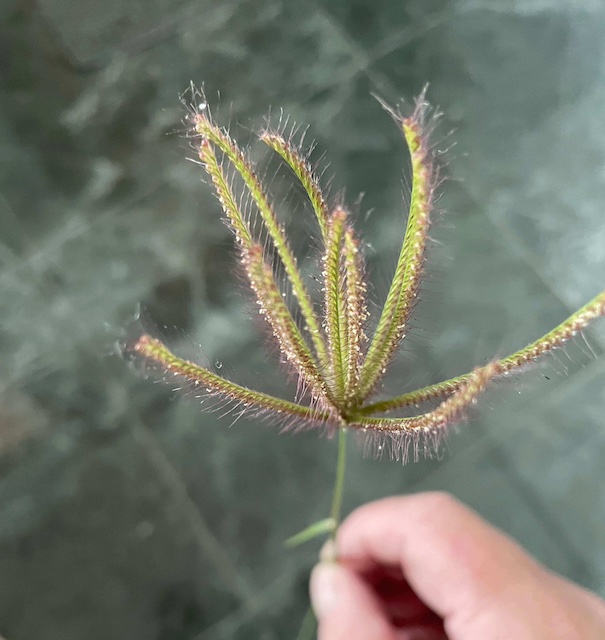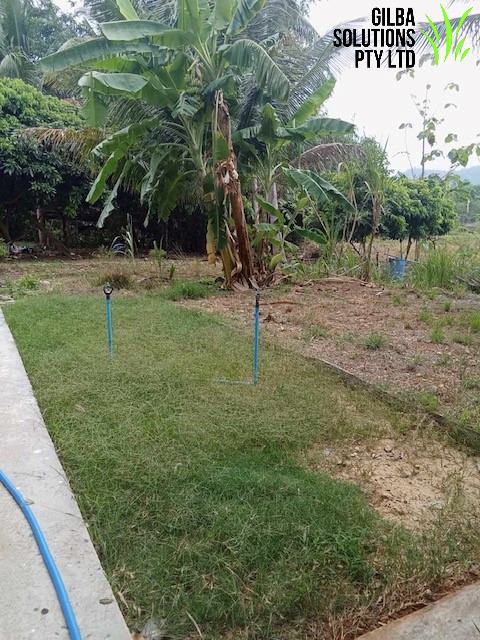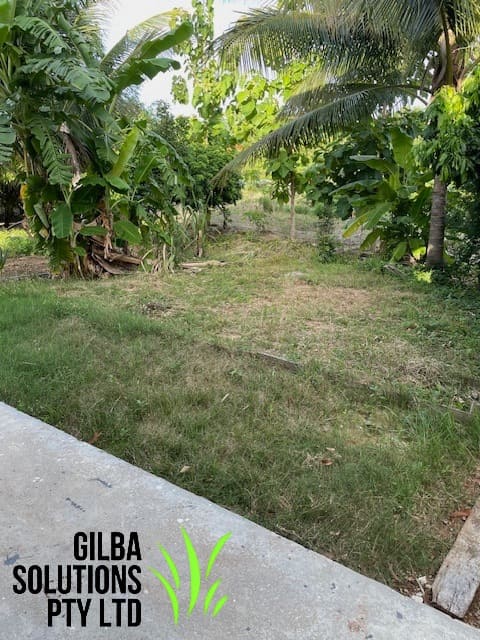Dealing with Windmill Grass (Chloris barbata).
This is Part 1 of a two part blog on How we try to selectively manage this weed grass. Windmill grass is also known as Slender finger grass or Feathery Rhodes Grass.
After reading this you will know where windmilll grass grows, how to identify feathery Rhodes grass and the best way to control it. More information is in our Weed ID Guide.
The site in question is covered in a tufted grass that appears to spread by stolons over the soil surface. The lawn area has been stolonised with a native Zoysia and Tahoma 31. Both the lawn and the waste area behind it are full of this tufted grass with a distinct seed head.
Our plan of attack is as follows:
- Correctly identify the weed grass;
- Determine if cultural control will work in our timeframe;
- If cultural control is not an option determine the best selective and non selective options;
- Feed the existing turf;
- Apply a pre-emergent to try and buy us time before we return in June.
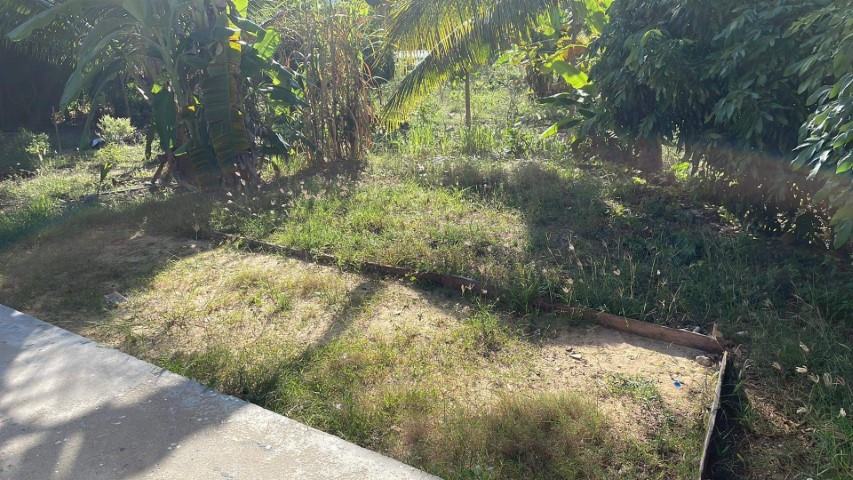
Grass Identification.
The key to its identification are these multi-fingered flower spikes.
Windmill grass is one of the so called ‘finger grasses’. As the name suggests these are called ‘Finger-grasses‘ because their flower heads look like fingers on a hand.
Chloris sp are tufted annual grasses up to 1 m tall with erect and semi-prostrate branched stems capable of rooting at the joints. Leaf blades are bluish green, 5 to 25 cm long and 3 to 6 mm wide.
The seed heads or panicles have 7 to 19 feathery, white-silver spikes that are 3 to 9 mm long. The feathery appearance comes from the stiff white hairs and awns arising from the seeds.
Chloris sp thrives in many habitats. These grasses prefers heavy soils but can grow in a wide soil range including alkaline, saline, and clay soils.
They are found from tropical to temperate areas with hot summers, and with a mean annual rainfall ranging from 375-750mm. I know of golf courses in the Hunter valley that historically had big problems dealing with this grass. Mine reclamation sites use this grass to revegetate areas. Seed had been blown off site onto the surrounding areas.
The grass grows up to about half a meter in height, sometimes forming tufts and sometimes spreading through stolons.
The inflorescence is an array of 4 to 20 fingerlike branches up to 10 centimeters long. Each branch contains approximately 10 spikelets per centimeter.
Windmill Grass Germination
Heat plays a major role in Feathery Rhodes Grass germination and triggers seed germination. Germination occurs across temperatures of 20 to 30 °C but a preference is shown for 25 °C and above with good exposure to light.
Light stimulates seed emergence. Any seeds present at the soil surface are exposed to high light levels but light levels rapidly decrease once seeds are buried.
Seeds are dormant for about 2 months after maturity. However, seeds buried at 5 cm depth remain viable for more than 14 months, whereas seeds on the soil surface lose viability after 12 months.
Windmill Grass Control
The key to controlling this annual grass is to manage the seed bank. This is best achieved by a combination of preventative and post emergent control.
This strategy breaks the life cycle of the weed and reduces the weed problem the following year. In a perfect world we would target small, actively growing weeds with our post emergent herbicide.
However, by the time we got around to dealing with this weed it was larger than 5 cm and pushing 10 cm plus. Once this grass exceeds 10 cm, it becomes more difficult to kill.
Cultural Control
Due to time pressure, chemical control was our only viable option to control Slender Finger Grass.
However if you bury the seed deeper than 5 cm and don’t disturb it for at least 12 months it stops seedling emergence. This approach rapidly reduces the seed bank as seed viability declines.
Chemical Control
Instead we carryied out a ‘double knock’ herbicide application. This gives great results against larger weeds.
Because of our location, we used Rimsulfuron (a Group 2 herbicide) over the entire site. This is safe to use on Zoysia and the Tahoma couch.
21 days later we applied Glyphosate (a Group 9 herbicide) plus the pre emergent herbicide Barricade (prodiamine) to the ungrassed areas.
The advantage of the Group 2 Herbicide is that it could be selectively sprayed over the entire site. This selectivity means that it avoids non target damage to the turf already present in the front of the below image.
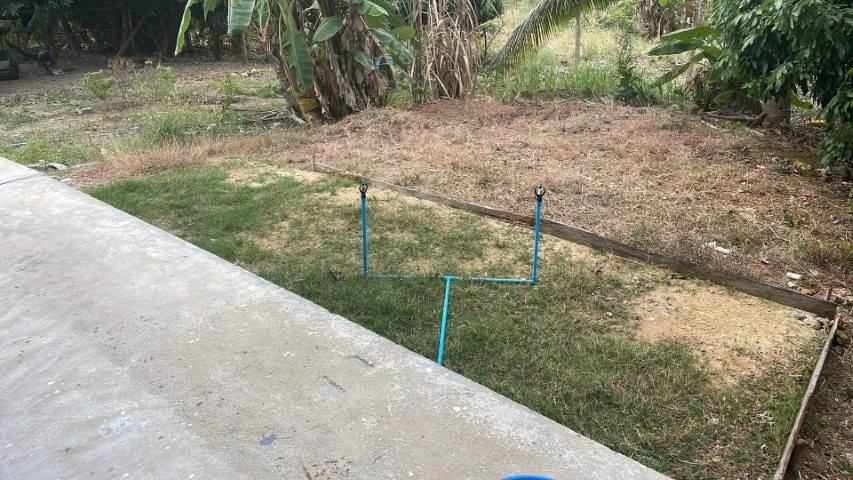
By having a 21 day knock interval it gives time for the chemical to ‘kick in’. This allows time to remove dead vegetative material off the surface before the second herbicide application.
By removing the dead vegetative material it maximises the pre emergent application by giving the chemical the best possible chance of reaching the soil surface.
Watering in was left for 4 hours after application to enable glyphosate uptake. We then passed over the surface with several watering cans of water.
Part 2 – 5 months later.
So we are back! 5 months after the the glyphosate and Barricade applications and to be honest its not that bad. The Barricade looks like weeds are just starting to breakthrough but this is the tropics and I’d have taken 5 months pre-emergent control when we started this.
The grass area is a touch woolly, and it looks like the Zoysia has swallowed up the Tahoma couch. There is a bit of Windmill grass still around so we are going to remove the seedhead and dispose of it off-site.
Before we begin to lower the height of cut we are going to apply an application of Warhead Trio plus some Coliseum. The reason for this is we want the largest possible leaf area for herbicide uptake. There are some grass and broadleaf weeds around so this mix should deal with them without negatively effecting the Zoysia or the couch. 3 days after this we will mow it.

Jerry Spencer
Jerry has an Hons Degree in Soil Science (1988) from Newcastle Upon Tyne University. He then worked as a turf agronomist for the Sports Turf Research Institute (STRI) until 1993.
He gained a Grad Dip in Business Management from UTS in 1999. He has held a number of technical roles for companies such as Arthur Yates (Commercial Technical Manager) and Paton Fertilizers (Organic, turf specialty and controlled release fertiliser) portfolios.
In 2013 he established Gilba Solutions as independent sports turf consultants and turf agronomists. Jerry has written over 100 articles and two books on a wide range of topics such as Turf Pesticides and turfgrass Nutrition which have been published in Australia and overseas.

